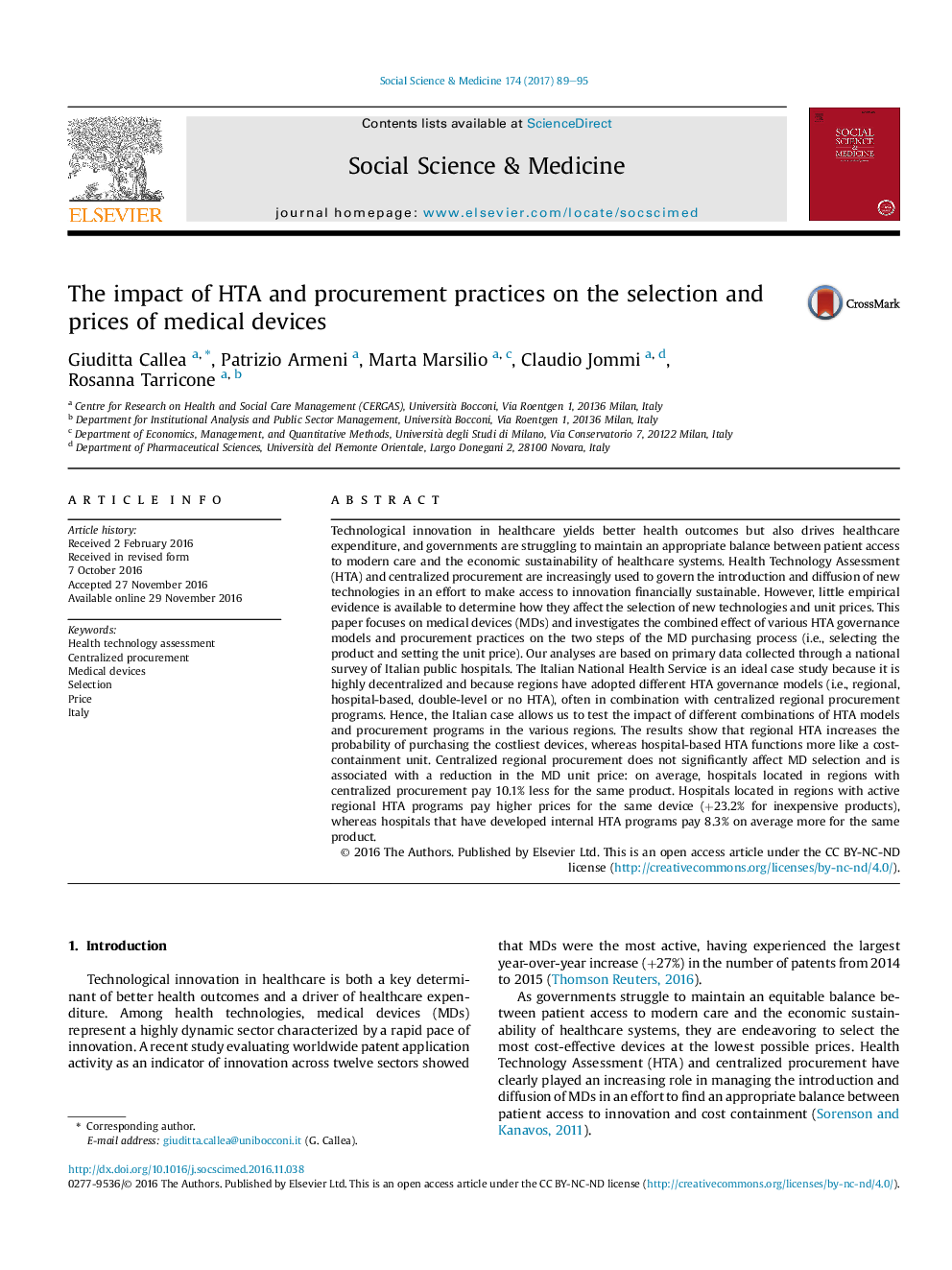| Article ID | Journal | Published Year | Pages | File Type |
|---|---|---|---|---|
| 5046815 | Social Science & Medicine | 2017 | 7 Pages |
â¢HTA and procurement are increasingly used to govern the uptake of new devices.â¢Little empirical evidence exists regarding their impact on healthcare expenditure.â¢We collected primary data through a national survey of Italian public hospitals.â¢Regional HTA favors the adoption of costly devices, unlike hospital-based HTA.â¢Centralized regional procurement yields lower medical device unit prices.
Technological innovation in healthcare yields better health outcomes but also drives healthcare expenditure, and governments are struggling to maintain an appropriate balance between patient access to modern care and the economic sustainability of healthcare systems. Health Technology Assessment (HTA) and centralized procurement are increasingly used to govern the introduction and diffusion of new technologies in an effort to make access to innovation financially sustainable. However, little empirical evidence is available to determine how they affect the selection of new technologies and unit prices. This paper focuses on medical devices (MDs) and investigates the combined effect of various HTA governance models and procurement practices on the two steps of the MD purchasing process (i.e., selecting the product and setting the unit price). Our analyses are based on primary data collected through a national survey of Italian public hospitals. The Italian National Health Service is an ideal case study because it is highly decentralized and because regions have adopted different HTA governance models (i.e., regional, hospital-based, double-level or no HTA), often in combination with centralized regional procurement programs. Hence, the Italian case allows us to test the impact of different combinations of HTA models and procurement programs in the various regions. The results show that regional HTA increases the probability of purchasing the costliest devices, whereas hospital-based HTA functions more like a cost-containment unit. Centralized regional procurement does not significantly affect MD selection and is associated with a reduction in the MD unit price: on average, hospitals located in regions with centralized procurement pay 10.1% less for the same product. Hospitals located in regions with active regional HTA programs pay higher prices for the same device (+23.2% for inexpensive products), whereas hospitals that have developed internal HTA programs pay 8.3% on average more for the same product.
